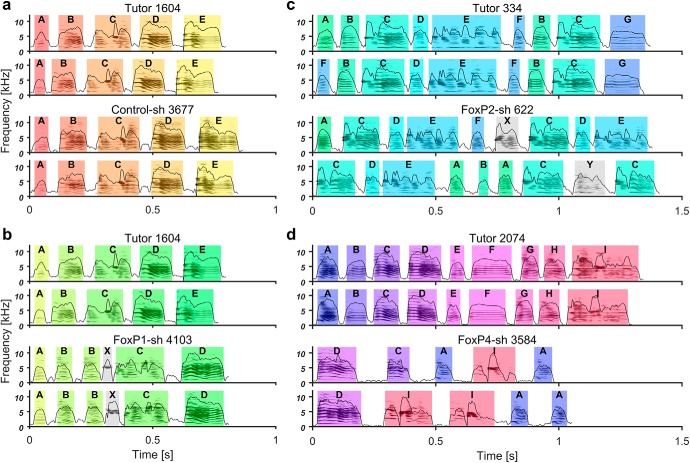Figure 7.
a–d, Representative sonograms with amplitude envelopes overlaid, illustrating different deficits in the experimental groups (bottom two rows) and their respective tutors (top two rows). Song elements of the same type in each tutor-pupil pair are indicated by the same color and identified by the same letter. The identity of song elements was determined by systematic similarity comparison between pupil and tutor elements using Sound Analysis Pro software (Tchernichovski et al., 2000). Song elements are separated by silent inhalation gaps. a, Control-sh-injected pupil 3677 imitated all elements from his tutor 1604 and delivered them in the same order. b, FoxP1-sh-injected pupil 4103 had the same tutor as the control-injected juvenile in a. In contrast to the Control-sh, the FoxP1-sh pupil did not copy element E, added an element that was not recognized by SAP as matching any tutor element between B and C (highlighted in gray, X), and copied element C less accurately. c, FoxP2-sh-injected pupil 622 copied elements A, B, C, E, and F from the tutor 334, included elements not recognized in the tutor song, and the sequence of elements varied from rendition to rendition. d, FoxP4-sh-injected pupil 3584 only copied elements A, C, D, and I from tutor 2047; the sequence as well as durations of song elements and gaps were altered. Delivery from rendition to rendition was not stereotyped, and elements were repeated often (I, I, A, A in the second example).

